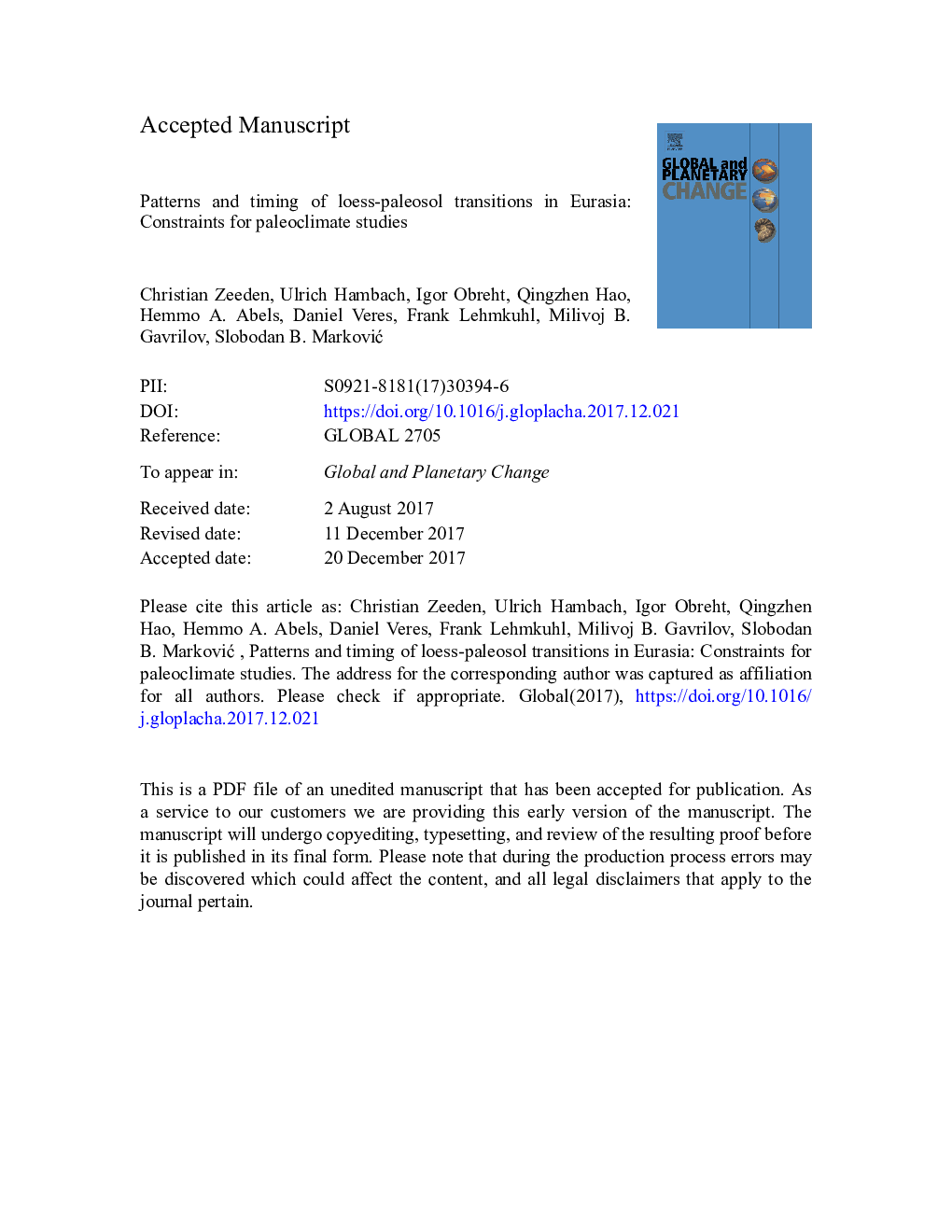| Article ID | Journal | Published Year | Pages | File Type |
|---|---|---|---|---|
| 8867564 | Global and Planetary Change | 2018 | 30 Pages |
Abstract
Our comparison of Eurasian LPS shows generally similar patterns of paleosol formation, while highlighting several crucial differences. Especially for paleosols developed around ~Â 200 and ~Â 300Â ka, the reported timing of soil formation differs by up to 30Â ka. In addition, a drying and cooling trend over the last ~Â 300Â ka has been documented in Europe, with no such evidence in the Asian records. The comparison shows that there is still uncertainty in defining the chronostratigraphic framework for these records on glacial-interglacial time scales in the order of 5-30Â kyr for the last ~Â 440Â ka. We argue that the baseline of the magnetic susceptibility proxy in loess from the Carpathian Basin is the most striking difference between European LPS and the Chinese Loess Plateau. In our opinion, many of the current timing/age differences may be overcome once a comparable stratigraphic interpretation is achieved.
Related Topics
Physical Sciences and Engineering
Earth and Planetary Sciences
Earth-Surface Processes
Authors
Christian Zeeden, Ulrich Hambach, Igor Obreht, Qingzhen Hao, Hemmo A. Abels, Daniel Veres, Frank Lehmkuhl, Milivoj B. Gavrilov, Slobodan B. MarkoviÄ,
